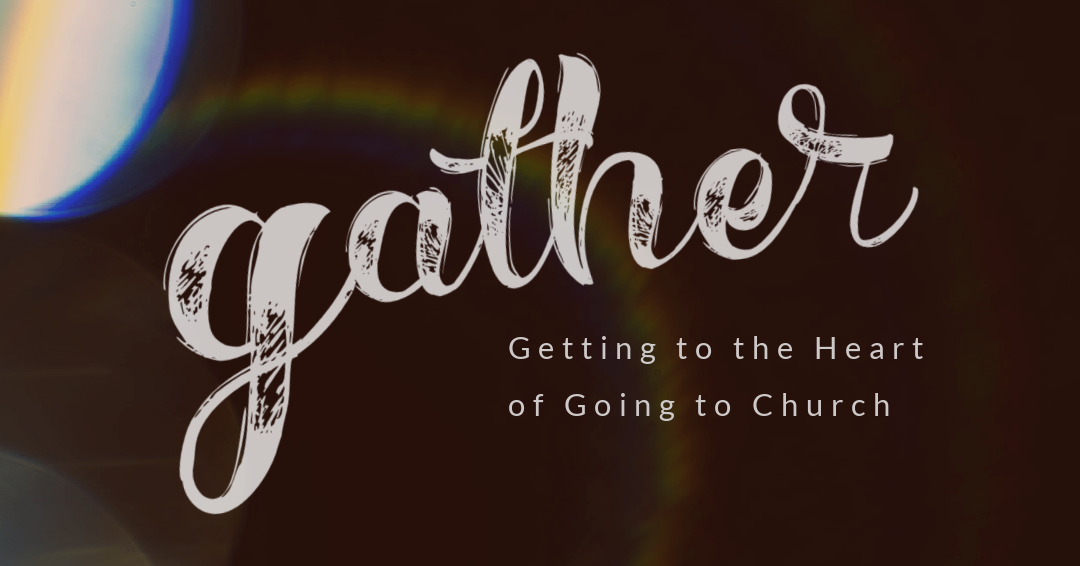
[The following is excerpted from the book, Gather: Getting to the Heart of Going to Church, Copyright © 2021 by M. Hopson Boutot. Click here to download the entire book for free.]
Perhaps you’ve been reading the blog as one who, for one reason or another, has chosen to livestream worship services at your church rather than attend in person. First, I’ll admit I do not know your circumstances. I hope after you read this, you’ll talk things over with your pastor to get wisdom to your specific situation. But if you’ll permit me, I’d like to ask you a few questions to examine yourself as you evaluate your decision to abstain from the gathering.
Are you allowing a cultural idolization of safety to color your thinking? Two years before the Covid-19 pandemic began, Greg Lukianoff and Jonathan Haidt wrote about a culture of “safetyism” that is pervading American culture. In their book The Coddling of the American Mind they write,
“Safetyism” refers to a culture or belief system in which safety has become a sacred value, which means that people become unwilling to make trade-offs demanded by other practical and moral concerns. “Safety” trumps everything else.[1]
This side of the pandemic, it’s hard to argue with their analysis. I’ve heard more talk about safety since the Covid-19 pandemic began than I think I have my entire life pre-Covid. Yes, we live in dangerous times. But frankly, they are significantly less dangerous (at least for most Westerners) than almost any other time in world history. Yes, it’s wise to take precautions to stay safe. But let’s remember that physical safety is not the only kind of safety there is. There’s also such a thing as spiritual safety. And sometimes you cannot have both physical safety and spiritual safety at the same time. Just ask the Apostles, John Wycliff, William Tyndale, Corrie ten Boom, Jim Elliott, and thousands of other saints who forfeited their physical safety but remained spiritually safe in the arms of Jesus.
There is a very real spiritual danger for the saint who is cut off from the local church. Sometimes it cannot be helped, but the danger is there nonetheless. And the longer the saint is absent from God’s people, the greater the danger becomes. So ask yourself, Christian, are you allowing the cultural obsession with safety to color your thinking? What role does spiritual safety play in your decision-making? If prioritizing your spiritual safety means potentially compromising your physical safety (at least to some degree), are you willing to make that trade-off? If not, why not?
Have you thought about how long you’re willing to stay safe at home? One of my pastoral concerns since the pandemic began has been the indefinite nature of the pleas for people to stay safe at home. First it was two weeks to flatten the curve. Then a vaccine. Then enough of the population vaccinated to make going out safe again. Then a host of viral variants reset the cycle all over again. Sure, I admit I’m a bit cynical. But I wonder if we’re aiming at the wrong things.
Technically speaking, all of us are safer at home. At least safer from some things. But Jesus has never promised safety to His followers. “But that doesn’t mean we throw caution to the wind!” Of course not. But it does mean we don’t hold out hope for the illusion of safety. We examine our circumstances and do our best to obey in the times in which we live. At the very least, I would encourage those staying home for a season to set a limit on just how long they’re willing to do so. Don’t allow the news alone to dictate when its safe for you to resume gathering with God’s people.
How are you moving towards the physical gathering? I think it’s helpful to think about livestreaming like a pair of crutches. When I broke my ankle at age twelve, I was forced to use crutches for weeks while my leg healed. After a few weeks I got pretty good on those crutches, but the goal was never to use them long-term. The same should be true for your experience with livestreaming. It’s a temporary crutch best reserved for a time of acute need. It’s not intended to be used for those weeks you just don’t feel like getting out of bed early. Don’t abuse this technology. Don’t allow yourself to think you’re walking just fine when you’re still using crutches. Work towards healing. Do what you can to move towards the physical gathering as soon as possible.
[1] Greg Lukianoff and Jonathan Haidt, The Coddling of the American Mind: How Good Intentions and Bad Ideas Are Setting Up a Generation for Failure (New York: Penguin Press, 2018), 30.
